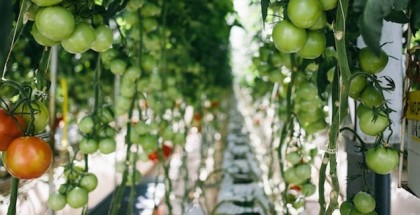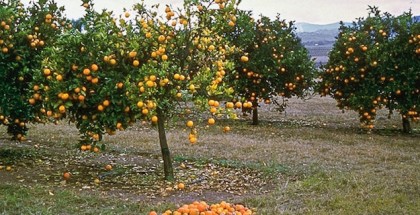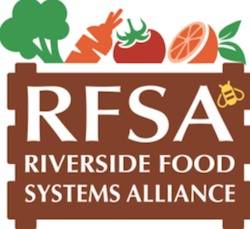Conference News
Value-Added Products from Citrus Jam to Goat Milk Soap Fuel Local Food Movement in Riverside
March 22, 2016 | AJ Hughes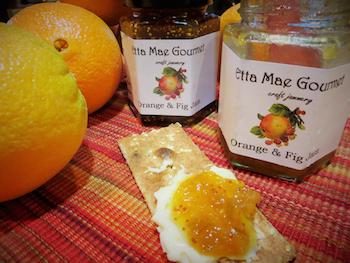
Orange & fig jam is one of many flavors offered by Riversidebased Etta Mae Gourmet. (photo courtesy Laura GoalenAnderson/Etta Mae Gourmet)
For centuries, artisans have added value to agricultural produce. Today, soap made from locally sourced goat milk and jam made with citrus sourced from local groves are among numerous value-added items available in Riverside, California.
Laura Goalen-Anderson of Etta Mae Gourmet and Janice Lake of Goat Rodeo Soap took different routes toward becoming value-added entrepreneurs, and both are passionate about providing quality products that include ingredients grown and raised locally.
Goalen-Anderson has always liked to cook, and making jams is one of her main culinary interests. In 2013, the Riverside Food Co-op approached her to see if it could offer her jams to its members. She was delighted to be included, and her local “craft jammery” in downtown Riverside was born. She named the business after her grandmother, Etta Mae, who each year made strawberry jam and orange marmalade. Read More
In Face of Citrus Greening Disease and Unsustainable Prices, Can Riverside’s Citrus Industry Endure?
March 21, 2016 | AJ Hughes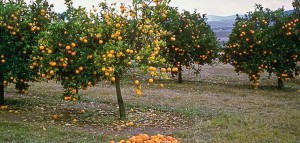 “Riverside oranges are a beautiful commodity, and have the best taste ever,” says Riverside farmer Brian Griffith. But in the face of citrus greening disease and unsustainable prices, can the citrus industry in Riverside, California endure?
“Riverside oranges are a beautiful commodity, and have the best taste ever,” says Riverside farmer Brian Griffith. But in the face of citrus greening disease and unsustainable prices, can the citrus industry in Riverside, California endure?
To get an answer to this question, we spoke with an entomologist and two orange growers. The entomologist is confident that Riverside citrus will survive citrus greening disease (otherwise known as HLB), and both growers are moving forward with realism tinged optimism. At the moment, though, there are no easy answers—only complex ones.
Insect Helped Expose Existing Problems
The Asian citrus psyllid, a sap-sucking insect native to Asia, was first found in Florida in 1998. Now, it has made its way to the West Coast. The bug is one of two vectors of HLB (the other is the African citrus psyllid). It poses a serious threat to all citrus trees, and currently there is no cure.
Original Water System that Spawned Riverside Citrus Industry Remains Key to City’s Local Food Future
March 21, 2016 | AJ Hughes
The Gage Canal became a reality in the late 19th century, and was a key factor in making Riverside a major citrusgrowing area. (Wikimedia Commons photo)
Riverside, California and its relationship with water goes all the way back to its founding in the early 1870s, when the city was named for its close proximity to the Santa Ana River. In present times, access to water and water policy can seem like a complicated maze, one best solved by examining the city’s geography and history.
The 96-mile-long Santa Ana River, the largest river in Southern California, begins in the San Bernardino Mountains and flows through Riverside and Orange county before emptying into the Pacific Ocean. The Santa Ana River Basin is massive, spanning 2,650 square miles in four counties.
Riverside uses precipitation that winds up in this basin for its water supply, as much of it is collected in 54 wells operated by Riverside Public Utilities.
The city is the birthplace of the California citrus industry, which came to fruition only because of newfound water sources. Read More
Experts Weigh in: While Hydroponic Growing Techniques Offer Incredible Benefits, We Still Need Dirt
March 16, 2016 | AJ Hughes
Tomato plants grow in the soil. (Wikimedia Commons photo)
Traditionally, farmers have grown plants in nutrient-rich soil. Now an increasing number of growers are utilizing hydroponic growing systems, which use a variety of soil-less media in a controlled environment.
But which is better—soil or soil-free?
Seedstock ventured to find an answer to this question by talking to a farmer, a hydroponics expert, a horticulturist and a chef. They each have different opinions, but one thing is clear: while soil-less growing techniques can offer incredible benefits, we still need dirt.
Here’s what they had to say. Read More
6 Simple Ways To Support Local Food And Farmers
March 10, 2016 | Davina van Buren
Kevin Prather of Mellowfields Urban Farm and Common Ground urban farm, sells his produce at the Cottins Hardware Farmers Market. Image credit: Eileen Horn
Whether you are new to the local food scene, or you’ve been buying from your neighborhood farmers market for years, you’re making a big difference in the lives of small farmers and food distributors. But the food system is complicated. It’s not always clear how to spend your resources—whether to invest time or money—to best support your local food system.
So we’ve compiled six tips to make it even easier for you to support local food producers. Read More
Urban Aquaponic Farmer and Chef Redefines Local Food in Orange County, CA
March 7, 2016 | AJ Hughes
Heads of lettuce gain their sustenance through aquaponics channels at Future Foods Farms in Brea. Photo courtesy Barbie Wheatley/Future Foods Farms.
In a county named for its former abundance of orange groves, chef and farmer Adam Navidi is on the forefront of redefining local food and agriculture through his restaurant, farm, and catering business.
Navidi is executive chef of Oceans & Earth restaurant in Yorba Linda, runs Chef Adam Navidi Catering and operates Future Foods Farms in Brea, an organic aquaponic farm that comprises 25 acres and several greenhouses.
Navidi’s road to farming was shaped by one of his mentors, the late legendary chef Jean-Louis Palladin.
“Palladin said chefs would be known for their relationships with farmers,” Navidi says. Read More
Spring in California is Time to Inspect Citrus Trees for Asian Citrus Psyllid
March 7, 2016 | UC ANR NewsNews Release – A tell-tale sign of spring in California is a flush of new leaf growth on citrus trees. Because the feathery light green leaves are particularly attractive to Asian citrus psyllids (ACP), the leaves’ emergence marks a critical time to determine whether the pest has infested trees.
“We encourage home citrus growers and farmers to go out with a magnifying glass or hand lens and look closely at the new growth,” said Beth Grafton-Cardwell, UC Agriculture and Natural Resources (UC ANR) citrus entomologist. “Look for the various stages of the psyllid – small yellow eggs, sesame-seed sized yellow ACP young with curly white tubules, or aphid-like adults that perch with their hind quarters angled up.” Read More
Sustainability and Rural, Urban Collaboration Key to Agriculture Economy in California, Says UCANR Head
March 3, 2016 | Rose Egelhoff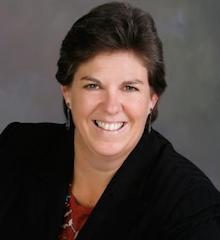
Dr. Glenda Humiston Vice President UC Agriculture and Natural Resources (UCANR).
Dr. Glenda Humiston has been Vice President of the University of California Division of Agriculture and Natural Resources (UCANR) for seven months, but she has been on farms throughout her life.
Growing up, Dr. Humiston’s family’s farm was just over 300 acres, with a small dairy, cow-calf operations, crops and a home garden to feed the family. But her parents had to work off-farm to make ends meet.
“It was a typical family farm story back then,” she says.
Dr. Humiston’s parents’ struggle fueled her interest in farm policy, an interest that was cemented during a Peace Corps stint in Tunisia where she helped set up a large, California-style dairy in an area without the infrastructure. Read More




